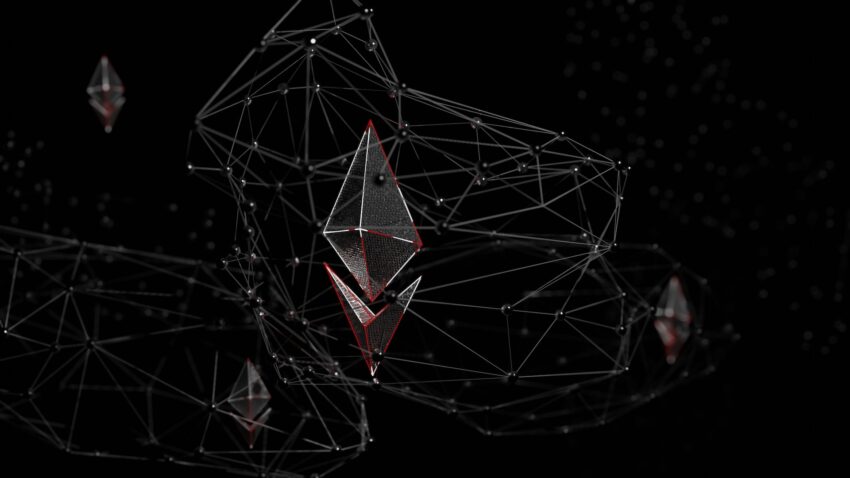The Ethereum Bridge: Unlocking Interoperability and Expanding the Possibilities of Decentralized Finance

In the world of blockchain technology, Ethereum has emerged as a powerful platform that has revolutionized decentralized finance. With its smart contract capabilities and robust ecosystem, Ethereum has paved the way for a new era of financial innovation.
Decentralized finance, also known as DeFi, aims to disrupt traditional financial systems by providing open and permissionless access to financial services. Ethereum serves as the backbone of this movement, enabling developers to create and deploy decentralized applications (dApps) that can revolutionize various sectors including lending, borrowing, trading, and more.
The need for interoperability in the blockchain ecosystem
While Ethereum has made significant strides in the realm of decentralized finance, the blockchain ecosystem as a whole still faces a crucial challenge – interoperability. Interoperability refers to the ability of different blockchain networks to seamlessly communicate and interact with each other.
Currently, most blockchain networks operate in isolation, limiting the flow of information and assets between them. This lack of interoperability hinders the growth and potential of the decentralized finance ecosystem, as it restricts the efficiency and effectiveness of cross-chain transactions.
What is the Ethereum Bridge?
To address the issue of interoperability, the Ethereum community has developed a solution known as the Ethereum Bridge. The Ethereum Bridge is a technology that allows for the transfer of assets and data between Ethereum and other blockchain networks.
It acts as a link, connecting different blockchains and enabling them to communicate with each other. By bridging the gap between different networks, the Ethereum Bridge unlocks the potential for greater collaboration, innovation, and growth in the decentralized finance space.
How does the Ethereum Bridge work?
The Ethereum Bridge operates by utilizing a combination of smart contracts and oracles. Smart contracts are self-executing contracts with the terms of the agreement directly written into code. They enable the automation of transactions and the enforcement of rules without the need for intermediaries.
Oracles, on the other hand, are external data sources that provide real-world information to smart contracts. In the context of the Ethereum Bridge, oracles play a crucial role in facilitating cross-chain transactions by verifying and transferring assets and data between different blockchain networks.
When a user wants to transfer assets from one blockchain network to another, they initiate the process through the Ethereum Bridge. The smart contracts within the Ethereum Bridge then execute the necessary actions to validate and verify the transaction.
Once the transaction is confirmed, the oracles facilitate the transfer of assets from one blockchain to another, ensuring that the transaction is secure and transparent. This seamless process allows for the interoperability between Ethereum and other blockchain networks, unlocking a world of possibilities for decentralized finance.
Advantages and benefits of the Ethereum Bridge
The Ethereum Bridge offers several advantages and benefits that contribute to the growth and development of decentralized finance. Firstly, the Ethereum Bridge enables the transfer of assets and data between different blockchain networks, fostering greater collaboration and innovation. This interoperability allows for the creation of more complex and sophisticated financial applications, as developers can leverage the strengths and capabilities of multiple networks.
Secondly, the Ethereum Bridge enhances the liquidity and efficiency of decentralized finance by enabling cross-chain transactions. With the ability to transfer assets seamlessly between different networks, users have access to a wider range of financial opportunities and can take advantage of arbitrage opportunities across different markets. This increased liquidity not only benefits individual users but also strengthens the overall stability and resilience of the decentralized finance ecosystem.
Furthermore, the Ethereum Bridge promotes the decentralization and democratization of financial services. By connecting different blockchain networks, the Ethereum Bridge empowers individuals and communities to access financial services without the need for traditional intermediaries. This eliminates barriers to entry and fosters a more inclusive financial system that is accessible to anyone with an internet connection.
Use cases for the Ethereum Bridge in decentralized finance
The Ethereum Bridge has a wide range of use cases in the realm of decentralized finance. One such use case is cross-chain asset transfers. With the Ethereum Bridge, users can transfer assets such as cryptocurrencies, tokens, and other digital assets between different blockchain networks. This enables users to take advantage of the unique features and opportunities offered by different networks, expanding their investment options and diversifying their portfolios.
Another use case is decentralized exchange (DEX) interoperability. DEXs are platforms that allow users to trade cryptocurrencies directly with each other without the need for intermediaries. By leveraging the Ethereum Bridge, DEXs can connect to multiple blockchain networks, increasing liquidity and expanding the range of tradable assets. This interoperability not only benefits traders but also enhances the overall efficiency and effectiveness of decentralized exchanges.
Additionally, the Ethereum Bridge can be utilized in lending and borrowing platforms. By bridging different blockchain networks, lending and borrowing platforms can access a larger pool of assets and borrowers, enabling them to offer more competitive interest rates and terms. This increased access to liquidity benefits both lenders and borrowers, creating a more efficient and inclusive lending market.
Challenges and limitations of the Ethereum Bridge
While the Ethereum Bridge offers significant advantages and benefits, it also faces certain challenges and limitations. One of the main challenges is the security and trustworthiness of oracles. Oracles play a crucial role in facilitating cross-chain transactions, but they rely on external data sources. If these data sources are compromised or manipulated, it can lead to fraudulent transactions and undermine the integrity of the Ethereum Bridge. Therefore, ensuring the reliability and security of oracles is of utmost importance.
Another challenge is the scalability of the Ethereum network itself. As the Ethereum ecosystem continues to grow and attract more users and applications, the network faces scalability issues. The high transaction fees and slow transaction speeds on the Ethereum network can impact the efficiency and effectiveness of the Ethereum Bridge. Scaling solutions such as Ethereum 2.0 are being developed to address these challenges, but it remains a work in progress.
Future developments and improvements of the Ethereum Bridge
Despite the challenges, the Ethereum community is actively working on future developments and improvements of the Ethereum Bridge. One area of focus is the enhancement of oracle technology. By integrating more robust and secure oracle solutions, the Ethereum Bridge can ensure the integrity and reliability of cross-chain transactions. Additionally, the Ethereum community is exploring layer 2 solutions and other scaling technologies to improve the scalability and performance of the Ethereum network, which in turn will benefit the Ethereum Bridge.
Furthermore, the Ethereum community is collaborating with other blockchain networks to establish standards and protocols for interoperability. By working together, different networks can create a unified ecosystem that allows for seamless communication and interaction. This collaborative effort will not only benefit decentralized finance but also contribute to the growth and adoption of blockchain technology as a whole.
Examples of successful projects leveraging the Ethereum Bridge
Several projects have successfully leveraged the Ethereum Bridge to unlock new possibilities in decentralized finance. One notable example is Aave, a decentralized lending platform that utilizes the Ethereum Bridge to access liquidity from other blockchain networks. By bridging different networks, Aave offers users a wide range of assets to borrow and lend, creating a vibrant and dynamic lending market.
Another example is Synthetix, a decentralized synthetic asset platform. Synthetix leverages the Ethereum Bridge to connect with other blockchain networks and access a broader range of assets to create synthetic assets. This interoperability allows Synthetix to offer users exposure to real-world assets such as stocks, commodities, and indices, without the need for traditional intermediaries.
Conclusion
The Ethereum Bridge holds immense potential in revolutionizing decentralized finance. By addressing the need for interoperability, the Ethereum Bridge enables seamless communication and interaction between different blockchain networks. This unlocks a world of possibilities for collaboration, innovation, and growth in the decentralized finance ecosystem.
Through its advantages and benefits, such as enhanced liquidity, increased access to financial services, and greater decentralization, the Ethereum Bridge empowers individuals and communities to participate in the future of finance. While there are challenges and limitations to overcome, the Ethereum community is actively working on future developments and improvements to ensure the scalability, security, and reliability of the Ethereum Bridge.
As we look towards the future, the Ethereum Bridge will continue to play a pivotal role in expanding the possibilities of decentralized finance. By bridging different networks and fostering interoperability, the Ethereum Bridge will pave the way for a more inclusive, efficient, and accessible financial system that empowers individuals and transforms the way we manage and interact with our finances.




Leave a Reply
You must be logged in to post a comment.